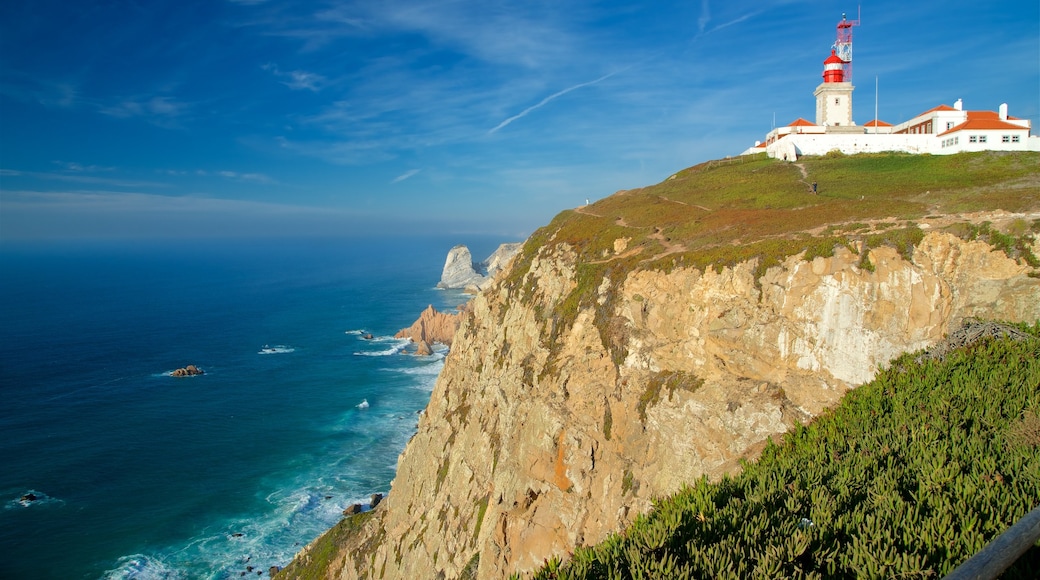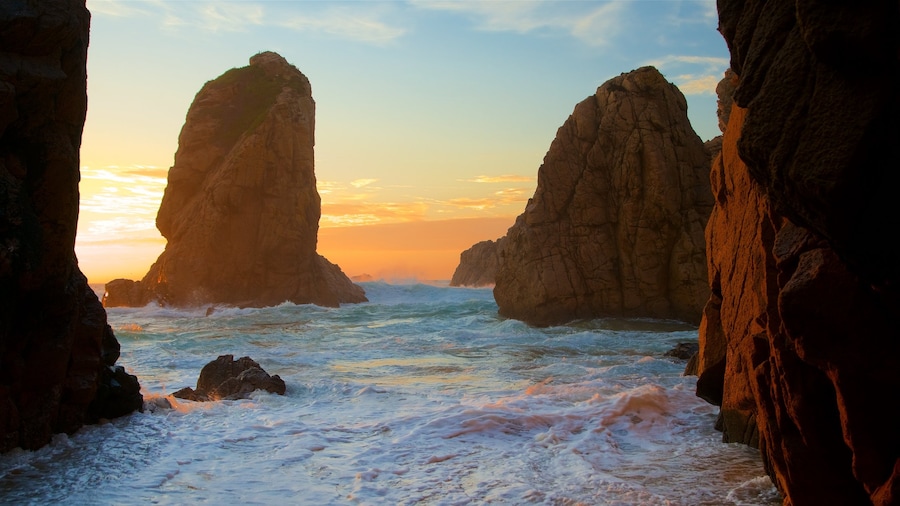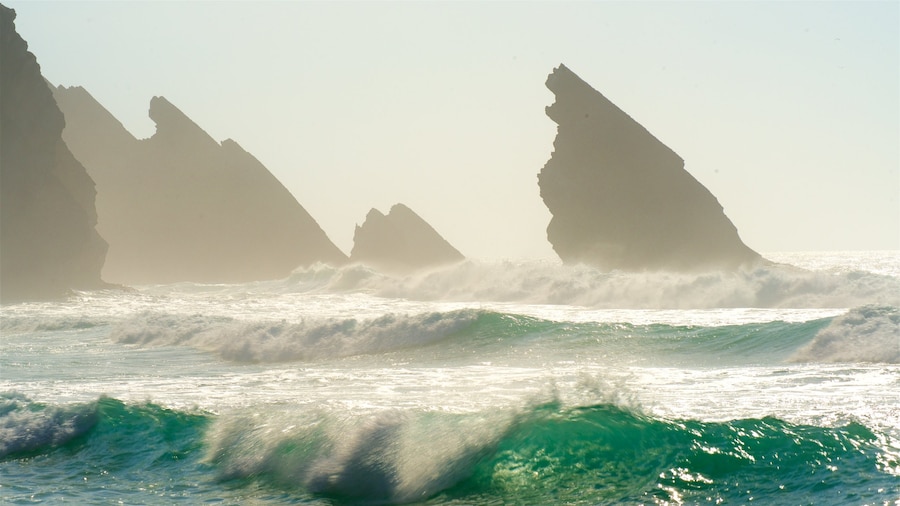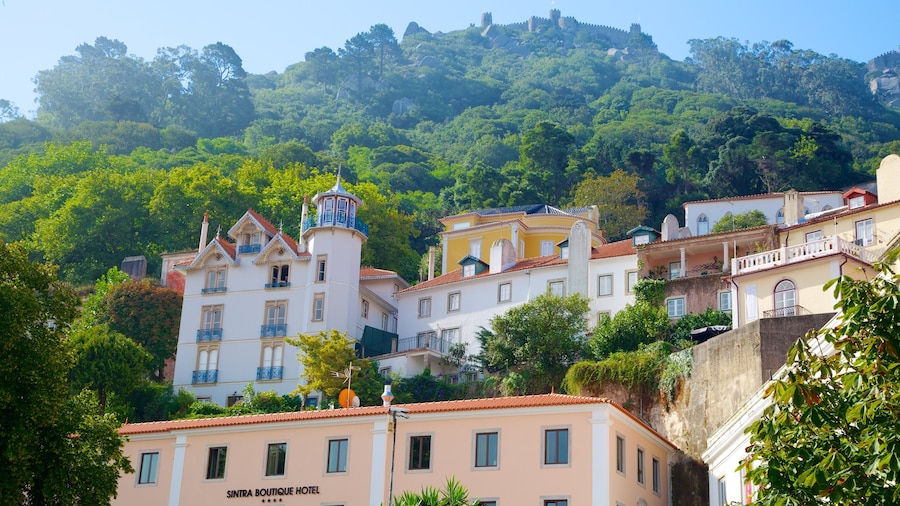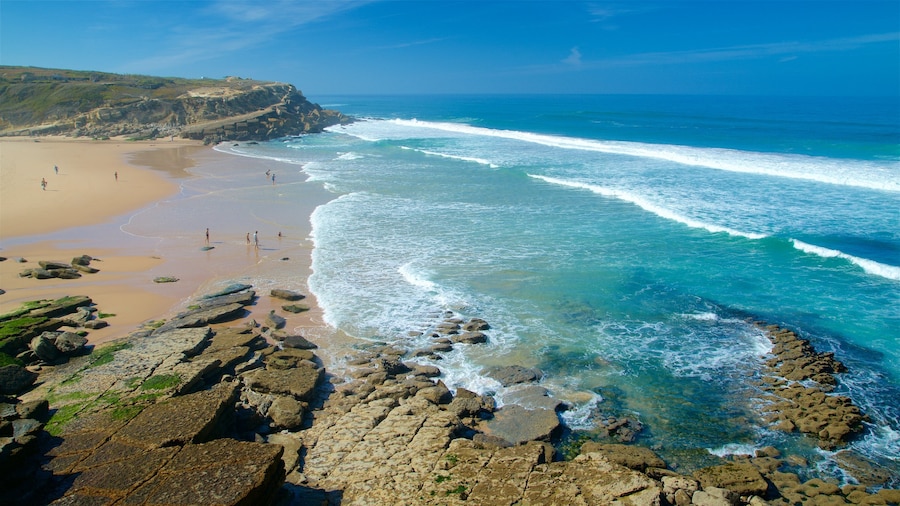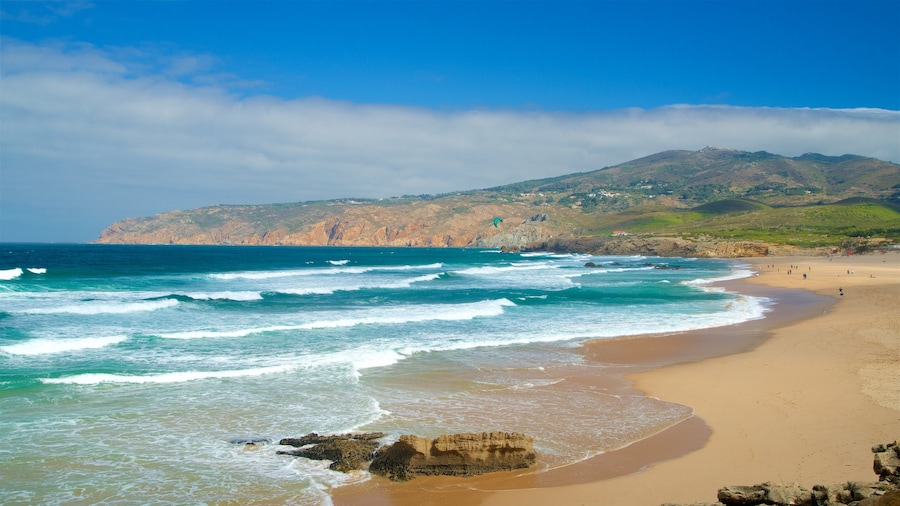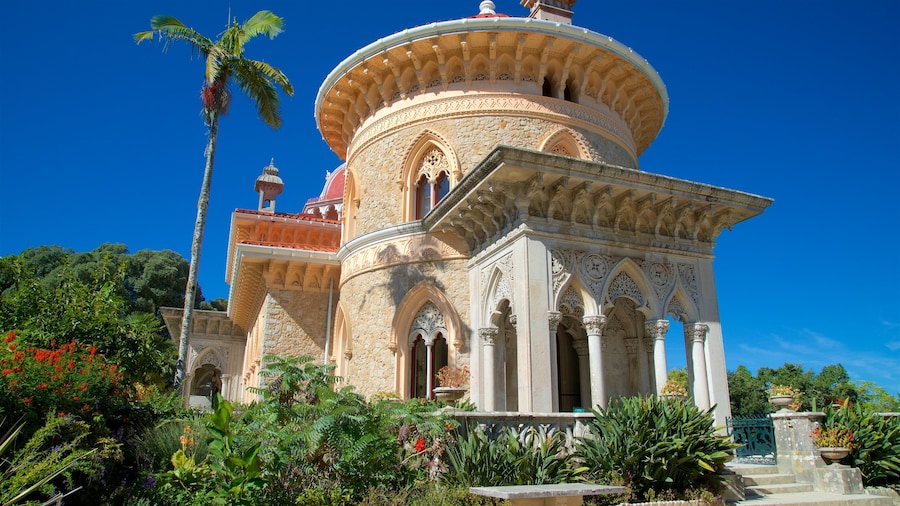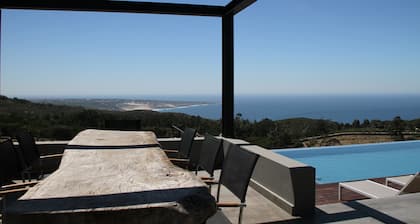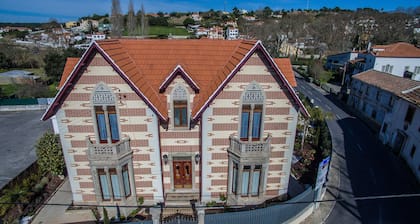Cape Roca, or Cabo da Roca as it’s known in Portuguese, is a dramatic, wind-battered tract of headland located at the most westerly point of mainland Europe. Admire the wild and windswept coastal scenery, follow trails along the cliffs and take photos of the monument that marks the spot as the westernmost on the continent.
As you explore the cape, cast your imagination back to centuries past when the fact that the Earth was round was not common knowledge. Back then, many people believed this spot was not just the edge of Europe but also the edge of the world.
Look for the Cape Roca lighthouse, which stands sentry on the 473-foot-tall (144-meter) cliffs above the ocean, projecting its light out to warn sailors of the dangers ahead. The original Cape Roca structure constructed in 1772 was one of the first purpose-built lighthouses in Portugal. The current lighthouse is a later construction dating back to 1842.
Also visible on the headland is a stone monument with a cross on top. Read the inscription on the stone, a quote from famous Lisbon-born poet LuísVazde Camões. The quote, which was written about Cape Roca, translates to: “Here… where the land ends and the sea begins.”
Follow one of several cliffside paths and admire views of the turbulent waves below. Because of its exposed nature, the cape is usually very windy. Wear appropriate clothing and be sure to stand at a safe distance from the cliff edge, particularly when taking photographs. Time your visit to coincide with sunset for the most scenic vistas.
Find Cape Roca 25 miles (40 kilometers) west of Lisbon and about 10 miles (16 kilometers) west of Cascais. Driving from Lisbon will take about 45 minutes. Alternatively, ride the Sintra-bound bus from Cascais or take a taxi. Entry is free and parking is available on-site. Before leaving, stop at the gift shop for souvenirs.
